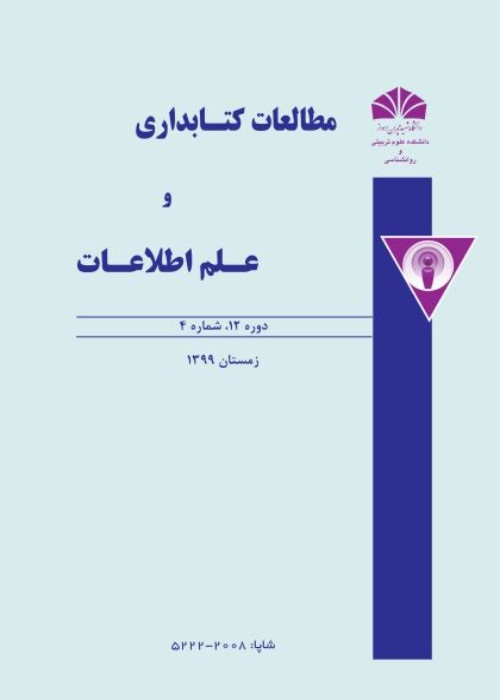Understanding the multiple relationships among epistemological beliefs, the need for cognition and information behavior of students of Shahid Chamran University of Ahvaz
The need for cognition and epistemological beliefs are two cognitive, epistemological and unique characteristics that exist on different levels in individuals and can affect their information behavior. Therefore, the present study aims to investigate the relationship between epistemological beliefs along with the need for cognition in the students of Shahid Chamran University of Ahvaz and their information behavior as well as investigating the relationship between the first two variables.
The present study is descriptive and applied in terms of survey method. The statistical population of this study are all the students studying at Shahid Chamran University of Ahvaz in all academic levels. The total population was 13,400, which according to the Krejcie-Morgan table, 380 people were selected as a sample using stratified random sampling method. The data collection tools in this study were three questionnaires that were provided to the subjects. The first questionnaire consists of 18 questions test of need for recognithin. This questionnaire was designed in the form of a 5-point Likert scale by Cassiopo, Petty and Cao (1984). The epistemological beliefs scale with 28 items in the 5-point Likert scale was used to measure epistemic beliefs, and the Mokhtari & Davarpanah information behavior questionnaire (Mokhtari & Davarpanah, 2012) was used to evaluate users' information behavior. This questionnaire has 35 items that are designed in a 5-point Likert scale. Cronbach's alpha reliability test showed that all three questionnaires have good reliability. In the present study, SPSS software version 23 was used for descriptive and inferential statistics analysis and Amos software version 23 was used to test the research hypotheses.
There are a few presuppositions for using path analysis method which are: 1) normal data; 2) Existence of appropriate correlation between variables; Therefore, using the Kolmogorov-Smirnov test and calculating the elongation and skewness of the data, the natural distribution of the data was investigated, which shows that the significance level in the variables of need for recognition, epistemological belief and information behavior is more than 0.05, which guarantees the normal distribution of data. In the next step, due to the normality of the data, Pearson correlation test was used to measure the relationship between the studied variables. The results of this test showed that there is a good correlation between the variables. Therefore, by confirming the normality of the data and the existence of an appropriate correlation between the variables, path analysis was used to analyze the variables. In reviewing the research hypotheses, the findings showed that the need for recognition has a positive and significant effect on information behavior (p <0.001; t = 2.169; β = 0.20) of students. In addition to these findings, it was confirmed that the epistemological beliefs also have a significant positive effect on students' information behavior (p <0.001; t = 2.094; β = 0.30). Based on the findings of this study, a two-way effect (correlation) between the variables of need for recognition and epistemological belief (p <0.001; r = 0.68) has been obtained, which indicates a positive and significant relationship. In the proposed model, the figures obtained from the model fit indices indicate the appropriate fit of the model.
Considering the research results and confirming the relationship between research variables, it can be argued that with the growth and development of epistemological beliefs and the need for recognition in students, we can hope that they would be effectively more engaged in cognitive processes to do academic work and homework and do not trust unreliable sources. Students who have high-level of epistemological beliefs, and who believe in complexity, uncertainty, and the need to acquire knowledge from reliable sources, show these mental beliefs in a tendency to engage with complex information and spend more time and energy on obtaining reliable and first-hand information. They become more successful in the information and decision-making processes, which in turn, will increase and consolidate their mental beliefs about knowledge and information, and this effective cycle will continue throughout their lives. The findings of this study can be effectively used in the process of planning curricula in universities (and even earlier in high school). In this regard, it is suggested to design topics for teaching cognitive skills and problem solving for different disciplines. On the other hand, professors and educators can help increase the level of need for recognition and epistemological beliefs by holding workshops on critical thinking and problem-solving methods.
- حق عضویت دریافتی صرف حمایت از نشریات عضو و نگهداری، تکمیل و توسعه مگیران میشود.
- پرداخت حق اشتراک و دانلود مقالات اجازه بازنشر آن در سایر رسانههای چاپی و دیجیتال را به کاربر نمیدهد.



